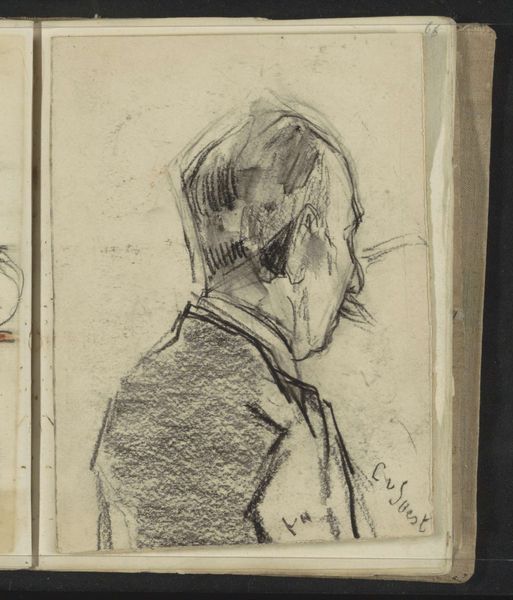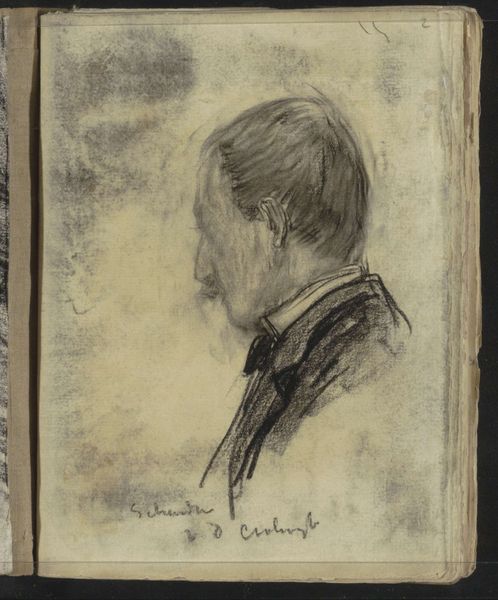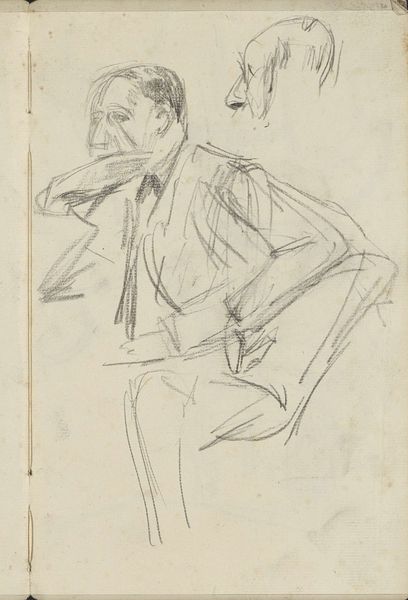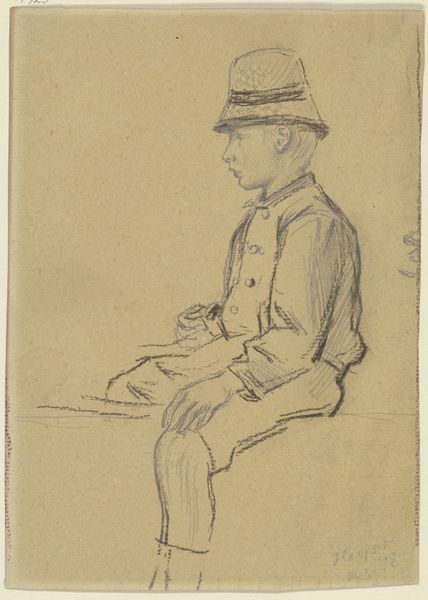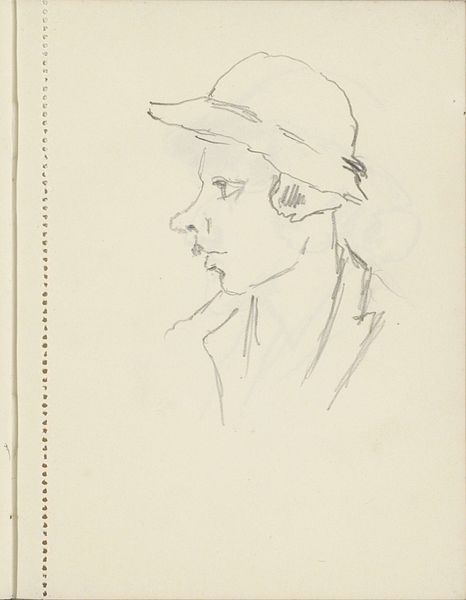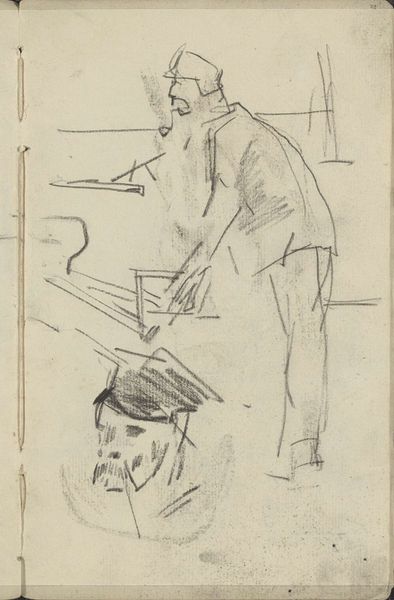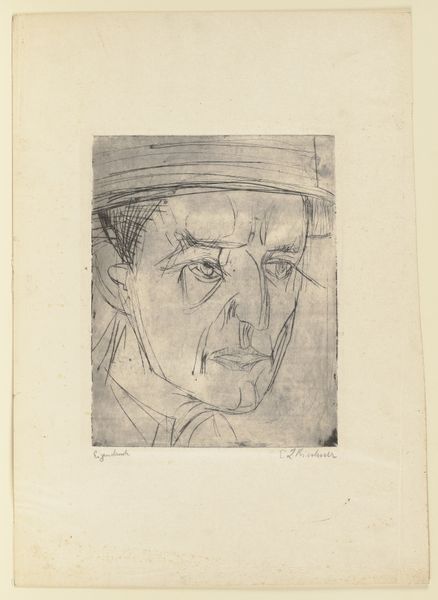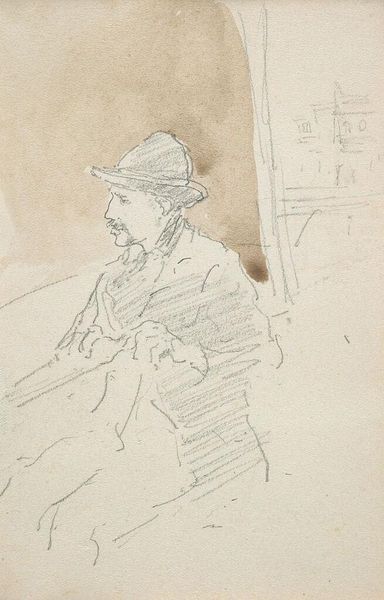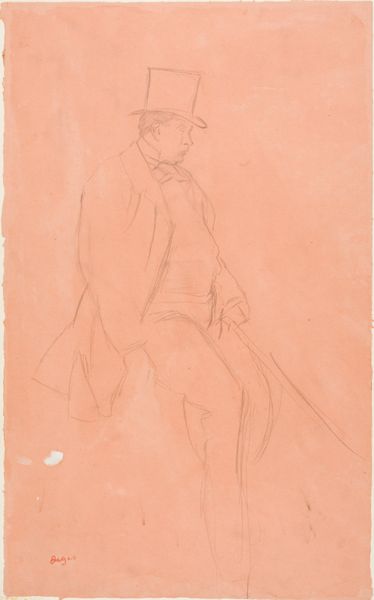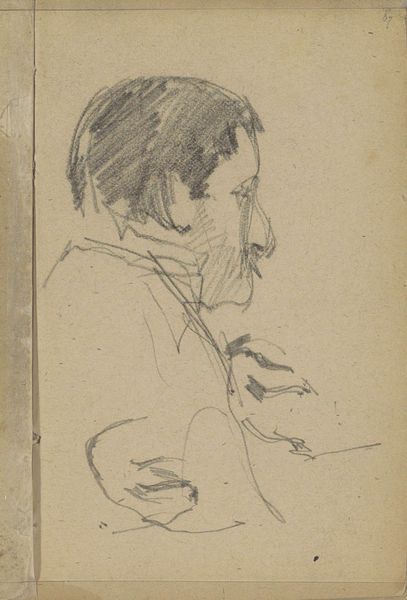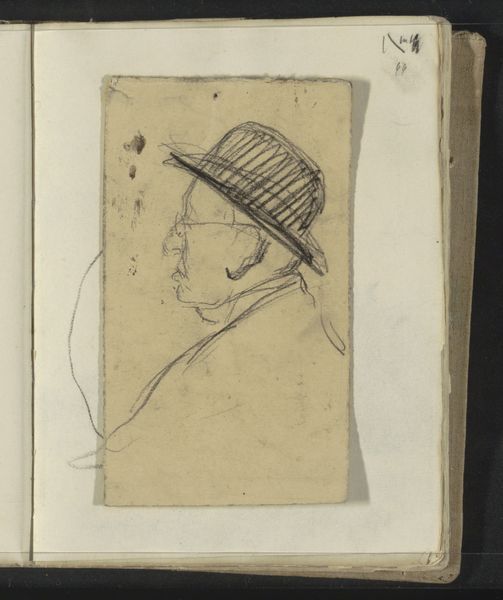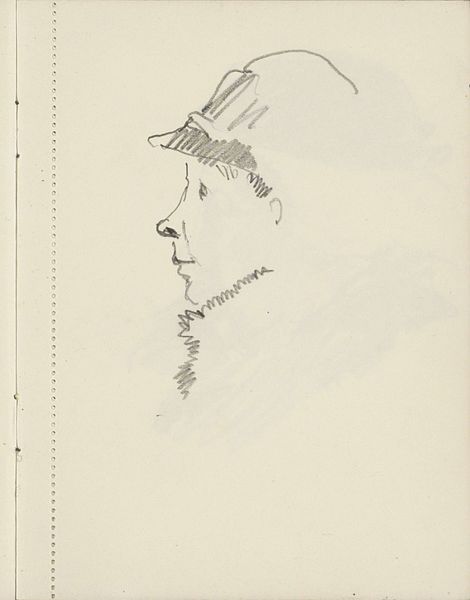
Copyright: Rijks Museum: Open Domain
Editor: Here we have Floris Arntzenius's pencil drawing, "Portret van kunstenaar Louis van Soest," likely created sometime between 1883 and 1914. It feels very immediate and intimate, like a quick sketch capturing a fleeting moment. What strikes you about this portrait? Curator: Formally, I am drawn to the economy of line. Arntzenius uses a remarkably limited number of strokes to define the form of van Soest. Notice the careful modulation of pressure – the darker lines that establish the hat and jacket versus the lighter, almost tentative lines describing the face. The negative space around the figure is as crucial as the marks themselves. How do you perceive the relationship between line and void? Editor: I see what you mean. The blank space almost gives the subject room to breathe, it feels very natural. Does the incompleteness add to the sketch’s impact, rather than detracting from it? Curator: Precisely. The unfinished quality invites the viewer to participate, to complete the image in their own mind. Semiotically, we can see the cigar as more than just a cigar, it becomes a signifier of van Soest’s character and environment. But what is absent is equally important in terms of what the image conveys. Note the lack of any background; this void removes him from any contextual elements. This abstraction focuses the viewer purely on the construction of the drawing and its most rudimentary elements. Editor: That’s a fascinating perspective! I hadn't considered how the absences contribute so significantly. It makes me see the piece in a totally different light. Curator: Considering it, do you notice that you, by trying to interpret its symbolic form, added something that may not even have been considered by the author? Our interaction with art changes it.
Comments
No comments
Be the first to comment and join the conversation on the ultimate creative platform.
